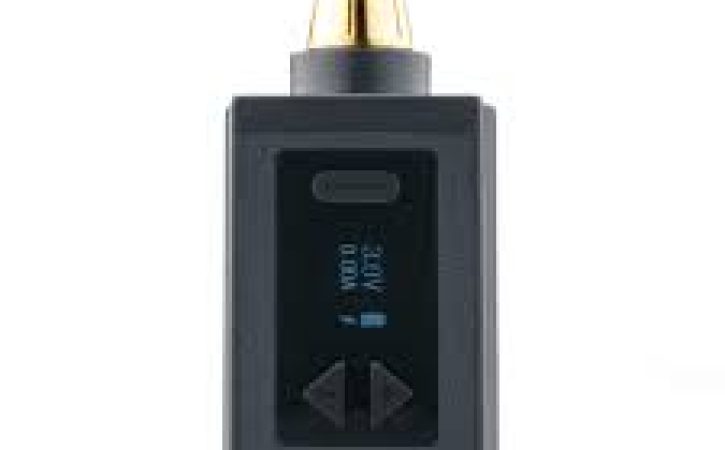Tattooing has evolved into a diverse and expressive art form, with a multitude of techniques and styles. Whether you’re a seasoned tattoo artist or a newcomer to the world of ink, the choice of tattoo needles plays a pivotal role in your ability to create captivating and enduring tattoos. In this comprehensive guide, we will explore the realm of shading needles, providing insights into the various types and configurations. We’ll also emphasize the importance of selecting the right shading needles to elevate your tattooing craft. Let’s embark on this journey to understand how to make the most of shading needles in the realm of tattoo art.
The Significance of Shading Needles in Tattooing
Before diving into the specifics of shading needles, it’s crucial to grasp their fundamental importance in the tattooing process. Shading needles, as the name suggests, are primarily used for creating gradient effects, soft shadows, and smoother transitions in a tattoo. These needles allow the artist to achieve various levels of gray and black ink saturation, adding depth and dimension to the artwork.
Understanding the Anatomy of a Tattoo Needle
Tattoo needles are a combination of elements that work in harmony to achieve the desired results. Let’s take a closer look at the primary components of a tattoo needle:
- Needle Bar: The needle bar is the central rod that holds the needles securely in place. It connects to the tattoo machine and facilitates the up-and-down movement of the needles.
- Needle Grouping: The grouping refers to the number of needles clustered together at the tip of the needle bar. Tattoo needles can have single, double, or multiple-group configurations, each serving a specific purpose in the tattooing process.
- Needle Tip: The needle tip is the part that penetrates the skin and delivers the ink. The shape and configuration of the needle tip can have a significant impact on the outcome of the tattoo.
- Taper: The taper represents the gradual reduction in diameter from the base to the tip of the needle. Taper type influences ink flow and precision.
Types of Shading Needles
Shading needles come in various types, each tailored to serve specific purposes in the tattooing process. Understanding these types is instrumental in selecting the best shading needles for your artwork. Here are some of the most common types:
- Magnum Needles (M1, M2, M3): Magnum needles are often used for shading as they allow for the efficient filling of larger areas with ink. They are available in different configurations, such as M1 (single-row) and M2 (double-row), enabling artists to choose the ideal needle based on their specific needs.
- Curved Magnum Needles: Curved magnum needles are designed with a slight curvature, which makes them perfect for creating smooth gradients and blending effects. This type of shading needle is particularly popular in color realism and portrait tattooing.
- Flat Needles: Flat needles are versatile and can be used for both outlining and shading. They are a preferred choice for artists who want to achieve a smooth transition between dark and light areas in a tattoo.
- Weaved Magnum Needles: Weaved magnum needles feature multiple staggered rows of needles. They are excellent for achieving intricate shading, creating subtle gradients, and adding depth to the tattoo.
Choosing the Best Shading Needles
Selecting the best shading needles for your work involves considering several key factors:
- Tattoo Style and Technique: Your choice of shading needles should align with the tattoo style and technique you plan to use. For instance:
- If you specialize in portrait tattoos or color realism, curved magnum needles are a wise choice for achieving lifelike shading.
- For intricate shading in black and gray tattoos, weaved magnum needles offer exceptional precision.
- Needle Configuration: The configuration of the needles on the needle bar is another crucial consideration. The number of rows and the spacing between needles impact the shading outcome. Thicker needle configurations provide bolder shading, while thinner configurations offer subtler results.
- Needle Gauge: The gauge of a shading needle, denoting its diameter, influences ink flow and penetration. Typically, thinner needles are used for finer shading work, while thicker needles excel in more substantial shading areas.
- Taper Type: The taper type significantly affects the needle’s precision. Long tapers are suitable for fine shading, while medium or short tapers are more versatile and cater to a broader range of shading needs.
- Needle Tip Shape: The shape of the needle tip can enhance or limit your shading capabilities. A rounded tip offers precision, while a flat tip is better for broader shading applications.
- Ink Flow and Saturation: Consider the ink flow and saturation that the shading needle allows. A well-designed shading needle should offer smooth ink flow, ensuring that the shading process is efficient and consistent.
- Brand and Quality: It’s imperative to source shading needles from reputable manufacturers to ensure they meet the highest standards of quality and sterilization. Premium shading needles contribute to superior tattoo outcomes and prioritize client safety.
The Advantages of Using the Best Shading Needles
Choosing the best shading needles for your artwork provides several significant advantages:
- Precision and Detail: High-quality shading needles enable precise shading work, allowing for the creation of intricate details and smoother gradients in the tattoo.
- Versatility: A diverse selection of shading needles in your toolkit allows you to adapt to various tattoo styles and client preferences, enhancing your versatility as an artist.
- Efficiency: The right shading needles optimize ink flow and coverage, reducing the need for multiple passes and minimizing skin trauma during the tattooing process.
- Client Comfort: Quality shading needles contribute to a more comfortable and less painful tattooing experience for your clients.
- Long-Lasting Tattoos: Using the appropriate shading needles, along with your skill and technique, results in tattoos that maintain their vibrancy and clarity over time.
Sterilization and Safety
The safety and sterilization of tattoo needles are paramount in the tattooing process. Proper hygiene practices are non-negotiable to ensure the well-being of both the artist and the client. Here are some critical safety measures:
- Disposable Needles: Whenever possible, opt for disposable shading needles to eliminate the risk of cross-contamination.
- Sterilization: Ensure that all non-disposable equipment, such as tattoo machines, grips, and needle bars, undergo rigorous sterilization before each use.
- Hygiene Protocols: Adhere to strict hygiene protocols, including the use of disposable gloves, the use of sterilized equipment, and maintaining a clean and organized workspace.
- Waste Disposal: Dispose of used needles and other contaminated materials in accordance with local regulations to prevent environmental hazards.
Conclusion
In the world of tattoo artistry, selecting the best shading needles is a fundamental step towards achieving remarkable and long-lasting tattoos. Your choice of shading needles influences your ability to create intricate details, smooth transitions, and captivating shading effects. It is a reflection of your commitment to your craft and your clients’ satisfaction. By understanding the different shading needles, their configurations, and their applications, you can elevate your tattooing skills and produce outstanding works of art. Remember that safety and hygiene go hand in hand with quality shading needles, ensuring a positive and memorable tattooing experience.
- SHARES







